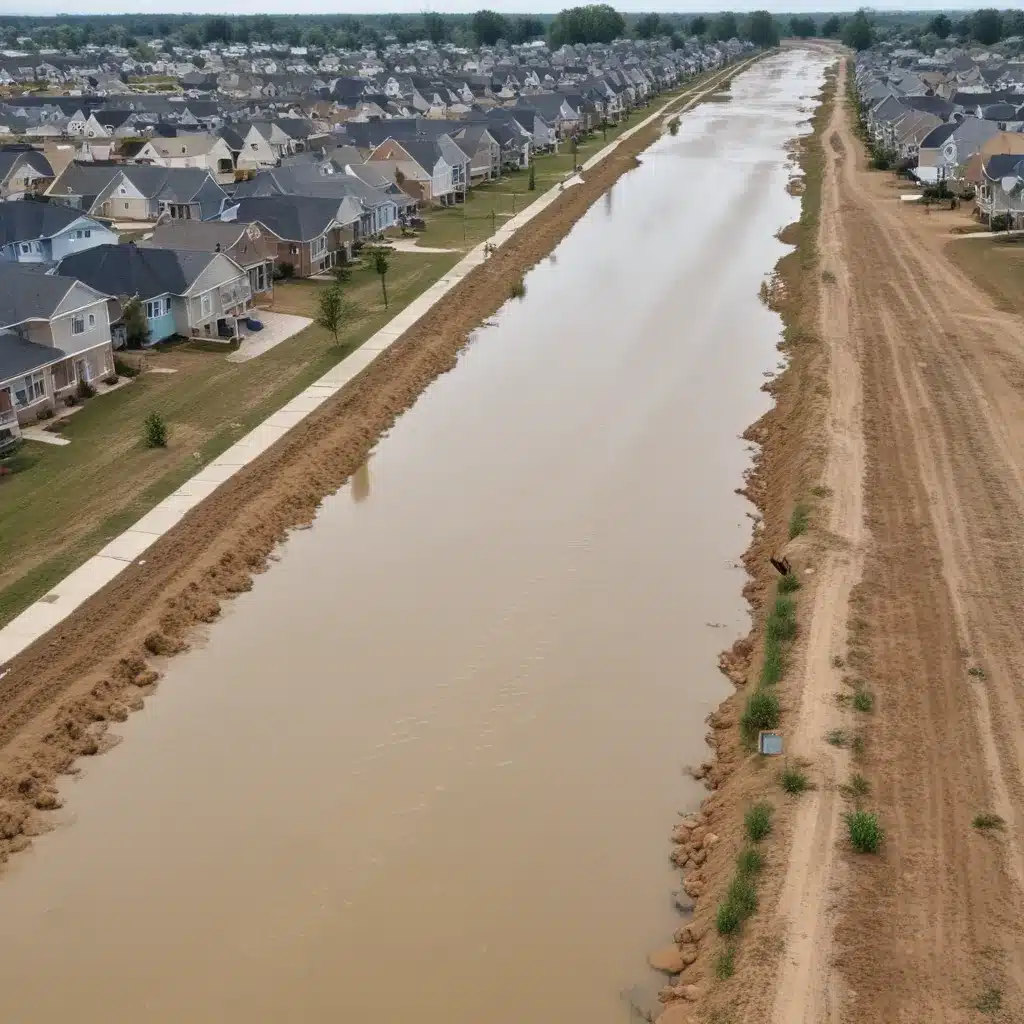
As a experienced flood control specialist, I’ve seen firsthand how communities across the country are grappling with the dual challenges of flood risks and water scarcity. Traditional “gray” infrastructure like concrete channels and underground pipes simply can’t keep up with the increasing frequency and intensity of extreme weather events driven by climate change.
Now, this might seem counterintuitive…
At the same time, growing populations and extended droughts are straining our limited freshwater resources. Fortunately, sustainable drainage solutions offer a cost-effective and nature-based approach to managing both flood risks and water scarcity in suburban and exurban areas. By integrating green infrastructure into our urban landscapes, we can build more resilient communities while providing a host of co-benefits.
Flood Risk Assessment
Before implementing any flood control measures, it’s crucial to conduct a thorough flood risk assessment for the local area. This involves detailed hydrological modeling to understand rainfall patterns, runoff dynamics, and the likelihood of flooding under different scenarios.
Flood mapping and hazard identification can pinpoint high-risk zones, critical infrastructure, and vulnerable populations. Vulnerability and exposure analysis look at factors like land use, soil conditions, and the presence of impervious surfaces that exacerbate flooding. Armed with this data, community planners and emergency responders can develop targeted strategies to mitigate flood risks.
Flood Control Infrastructure
Traditional flood control infrastructure, such as levees, detention basins, and stormwater drains, will continue to play an important role. However, these “gray” systems are often costly to build and maintain, and can have unintended consequences like disrupting natural hydrological processes.
Green infrastructure, on the other hand, harnesses the power of natural systems to manage stormwater and reduce flood risks. Permeable surfaces like porous pavement and vegetated swales and bioswales allow rainwater to infiltrate the ground, recharging aquifers and reducing the volume of runoff. Constructed wetlands and retention ponds temporarily store excess water, slowly releasing it over time to prevent sudden surges.
By integrating these natural drainage solutions into the built environment, communities can achieve the same level of flood protection as traditional gray infrastructure, often at a lower cost and with added environmental and social benefits.
Stormwater Management
Effective stormwater management is essential for mitigating both flood risks and water scarcity. Integrated stormwater systems that combine green and gray infrastructure can capture, filter, and reuse rainfall, preventing it from overwhelming sewer systems and waterways.
Low-impact development (LID) techniques, such as rain gardens, green roofs, and rainwater harvesting systems, allow water to be absorbed, evaporated, or stored for later use. These approaches not only reduce runoff but also improve water quality by trapping sediments, nutrients, and pollutants before they reach nearby streams and lakes.
By implementing these sustainable drainage solutions, communities can reduce the burden on traditional stormwater infrastructure, prevent combined sewer overflows, and provide a reliable source of non-potable water for irrigation, toilet flushing, and other applications.
Emergency Flood Response
Even with comprehensive flood control measures in place, communities might want to be prepared to respond effectively when extreme weather events occur. Early warning systems that monitor rainfall, stream levels, and other real-time data can alert authorities and residents to impending floods, allowing for timely evacuations and emergency response.
Robust evacuation planning and coordination between local, state, and federal agencies is crucial for ensuring the safe and efficient movement of people out of harm’s way. After a flood event, post-flood recovery and resilience efforts can help communities rebuild and implement measures to mitigate future risks.
Addressing Water Scarcity
As climate change and population growth place increasing demands on our finite water resources, sustainable drainage solutions can also play a key role in addressing water scarcity.
Water conservation strategies, such as drought-tolerant landscaping, efficient irrigation systems, and greywater recycling, can significantly reduce the amount of freshwater needed for residential, commercial, and agricultural uses. By capturing and reusing rainwater and stormwater, communities can augment their water supplies and reduce their reliance on scarce groundwater and surface water sources.
Groundwater management practices, including aquifer recharge and replenishment and sustainable withdrawal practices, can help maintain the long-term health and availability of this critical water resource. Integrating alternative water sources, like desalination and wastewater reclamation, into a community’s water portfolio can further diversify supply and build resilience.
Integrated Drainage Solutions
At the heart of sustainable flood and water management lie integrated drainage systems that seamlessly combine green and gray infrastructure. These holistic approaches leverage the strengths of both natural and engineered solutions to create more resilient, efficient, and adaptable water management systems.
Retention and detention ponds, bioswales, and constructed wetlands can temporarily store and filter stormwater, reducing the burden on downstream drainage networks. Pervious pavement, green roofs, and rainwater harvesting systems can reduce runoff and provide alternative water sources for non-potable uses.
By integrating these sustainable drainage solutions into the urban landscape, communities can improve water quality, enhance groundwater recharge, and reduce the risk of flooding – all while creating more vibrant, livable spaces and reducing long-term maintenance costs.
Community Engagement and Education
Effective implementation of sustainable drainage solutions requires close collaboration between local governments, urban planners, engineers, and the community. Public awareness campaigns can educate residents about the benefits of green infrastructure and encourage them to adopt water-smart practices on their own properties.
Engaging stakeholders – including homeowners, businesses, and community organizations – in the planning and decision-making process can build support for these initiatives and double-check that they meet the unique needs of the local area. Incentives and policy frameworks, such as stormwater fees, rebates, and zoning regulations, can also drive the widespread adoption of sustainable drainage solutions.
By taking a holistic, community-driven approach to flood and water management, suburban and exurban areas can build more resilient, livable, and sustainable communities for generations to come. The time to act is now, as the threats of climate change and water scarcity continue to intensify. Visit Flood Control 2015 to learn more about the latest innovations and best practices in this critical field.
Example: London Flood Resilience Initiative 2024















